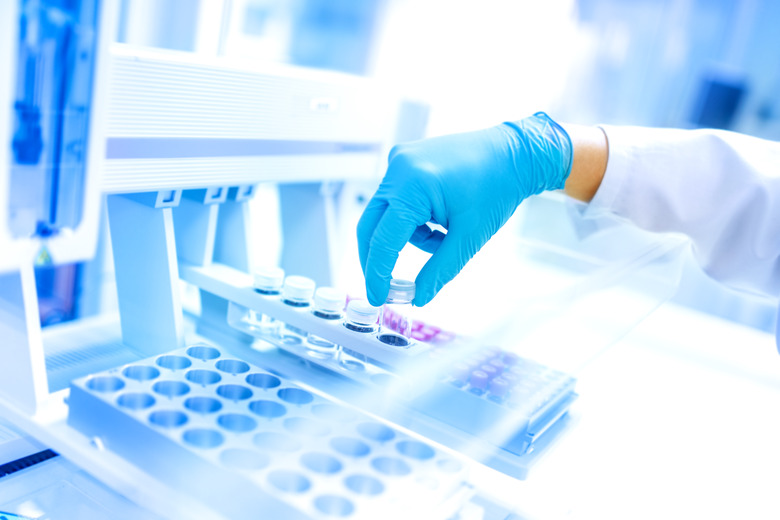Difference Between Transcription And DNA Replication
Transcription and DNA replication both involve making copies of the DNA in a cell. Transcription copies the DNA into RNA, while replication makes another copy of DNA. Both processes involve the generation of a new molecule of nucleic acids, either DNA or RNA; however, the function of each process is very different, with one involved in gene expression and the other involved in cell division. Although DNA and RNA have some chemical similarities, each molecule performs different functions in living organisms.
Transcription
Transcription
Transcription involves copying DNA into RNA. The portion of the DNA that codes for genes is transcribed, or copied, into messenger RNA, known as mRNA. The first step in the process is the unwinding and separation of the two strands of the DNA helix. An enzyme called RNA polymerase then travels along the length of the strand of DNA and binds complementary RNA nucleotides to it, until a complete strand of mRNA is formed. The mRNA is essentially the cellular blueprint for the construction of a particular protein. It travels from the nucleus to the cytoplasm, where it is translated into protein, a process known as gene expression
DNA Replication
DNA Replication
DNA replication is the process of copying the DNA in a cell so that there are two copies. This is done in preparation for cell division, or mitosis. Before a cell divides, the DNA must be copied so that there is a copy for each of the resulting daughter cells. First, the DNA unwinds and the two strands of the helix separate. An enzyme called DNA polymerase then travels along each strand, binding complementary nucleotides, the building-blocks of DNA, and resulting in two double-stranded helices which are an exact copy of each other.
Similarities
Similarities
Both DNA replication and transcription involve binding complementary nucleic acids to DNA, yielding a new strand of either DNA or RNA. Both processes can lead to errors if an incorrect nucleotide is incorporated. An error in either DNA replication or transcription can cause a change in the gene, by either changing the DNA sequence in one of the daughter cells leading to transcription of the incorrect mRNA sequence, or by causing the mRNA to incorporate an incorrect base pair resulting in the wrong protein sequence being translated.
Differences
Differences
DNA replication occurs in preparation for cell division, while transcription happens in preparation for protein translation. DNA replication is important for properly regulating the growth and division of cells. The DNA will not replicate if the cell lacks certain growth factors, thereby keeping the cell division rate under control. Transcription of DNA is the method for regulating gene expression. Although all of our cells contain copies of all of our genes, each cell only expresses, or turns on, the genes that are necessary for the functions of that cell. Transcription only occurs when a gene is turned on.
Cite This Article
MLA
Thompson, Noelle. "Difference Between Transcription And DNA Replication" sciencing.com, https://www.sciencing.com/difference-between-transcription-dna-replication-9038/. 13 March 2018.
APA
Thompson, Noelle. (2018, March 13). Difference Between Transcription And DNA Replication. sciencing.com. Retrieved from https://www.sciencing.com/difference-between-transcription-dna-replication-9038/
Chicago
Thompson, Noelle. Difference Between Transcription And DNA Replication last modified March 24, 2022. https://www.sciencing.com/difference-between-transcription-dna-replication-9038/
